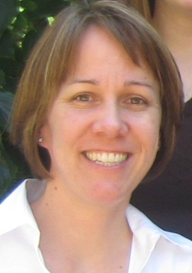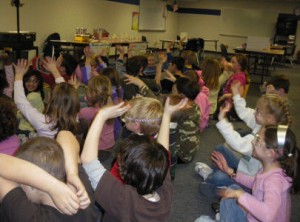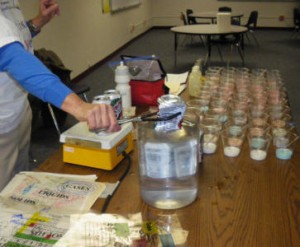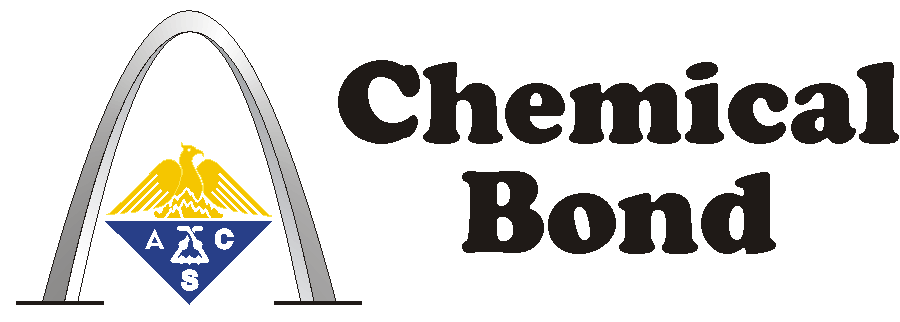
Vol. 66, No. 7, October 2015
In this issue:
- Saint Louis Chemical Science & Technology Award – call for nominations
- Sophia Hayes is 2015 Saint Louis Award winner
- Saint Louis Award Symposium Program 2015
- Saint Louis Award Banquet 2015
- Meet the 2015 Midwest awardee, Robert Blankenship
- American Chemical Society National Chemistry Week (NCW) 2015
- Seeking Retirees Eager to Make An Educational Impact
- The High School Chemistry Teacher-of-the-Year Award for 2016
- Bond Briefs • Election Ballot Special Chemical Bond Edition • LDF Module: Leading Multiple Generations
- Meetings and Seminars
- About the Chemical Bond
Our advertisers:
American Polymer Standards, Inc.
Chemir Analytical Services
micron inc.
Missouri Analytical Labs, Inc.
Place an ad in the Chemical Bond
Saint Louis Chemical Science & Technology Award – call for nominations
Nominate a member of your team for the Saint Louis Chemical Science & Technology Award. This award is presented to a chemist in the St. Louis area who has demonstrated a high degree of professionalism and scientific contribution. Criteria used to judge the award include technical proficiency, presentations, coaching/teamwork, and additional professional activities. The award will consist of a plaque, a $500 honorarium, and dinner for the awardee and a guest at the annual Recognition Night. The Due date is January 1 2016.
You can find all the details on eligibility, nominating a candidate, and recent winners right here. To submit a nomination, email the Chemical Science and Technology Award Coordinator Pegah Jalili at Pegah.Jalili@sial.com or phone 314.546.9278.
Sophia Hayes is 2015 Saint Louis Award winner
Jim O’Brien, Immediate Past Chair of the St Louis Section–ACS and Chair of the St Louis Award Jury, has announced the winner of the 2015 St Louis Award.
Sophia Hayes is Professor of Chemistry Washington University in St. Louis. Her BS is from UC Berkeley in Chemistry, and she spent three years in energy and environmental management consulting at RCG/Hagler, Bailly, Inc. in San Francisco, CA. She earned a PhD in Chemistry from UC Santa Barbara (1999), on a five-year fellowship from Sandia National Lab. At Santa Barbara she worked with Prof. Hellmut Eckert on solid-state NMR of lithium anode materials and amorphous carbons.Dr. Hayes was Directorate Postdoctoral Fellow at Lawrence Livermore National Laboratory (Materials Science) with Dr. Glenn Fox working in collaboration at UC Berkeley (Chemical Engineering) with Prof. Jeff Reimer, constructing an optically-pumped NMR apparatus and studying semiconductors and nanomaterials. She subsequently was named an Alexander von Humboldt Postdoctoral Fellow at University of Dortmund, Germany (Physics) performing optically-detected NMR on semiconductors, in collaboration with Prof. Dieter Suter.
Since 2001, Dr. Hayes has been at Washington University, starting as an Assistant Professor and rising to (Full) Professor in 2015. Her research efforts have been recognized with an NSF CAREER Award (2003), an Alfred P. Sloan Foundation Fellowship (2007), and the Regitze R. Vold Memorial Prize in solid-state NMR (2009).
Dr. Hayes’s research is focused on problems related to materials science where NMR spectroscopy can play a significant role. She and her group build specialized probes (i.e., with light access, high pressure gases, supercritical fluids). Her group is currently focused on three research areas.
- In situ elevated-pressure and -temperature 13C NMR of CO2 for materials discovery in mineralization (forming carbonates) and carbon capture (separating CO2 from flue gases). In this innovative project, in situ high-pressure NMR is employed under conditions that mimic geosequestration environments. This work, as part of a DOE NETL project, is focused on elevated-pressure and elevated-temperature NMR to monitor in situ reactions of CO2 gas with minerals and rocks envisioned for its capture and conversion to stable solid carbonates (such as MgCO3 and CaCO3). Project collaborators include Dan Giammar (Chemical Engineering), Mark Conradi (Physics), and Phil Skemer (Earth & Planetary Sciences). In situ 13C NMR is coupled with a reaction vessel at high pressures to monitor CO2(g) and HCO3—(aq), quantify conversion to CO32— as a solid carbonate, characterize metastable carbonates, and assess pH. In an extension of this work, the Hayes group is assessing flue gas “carbon capture” materials in collaboration with a DOE EFRC team with Chris Jones and Krista Walton (both Chemical Engineering, GA Tech), where NMR can characterize CO2 binding sites, degradative effects of the acidic gases on these materials, and measure temperature-dependent adsorption/desorption reactions.
- Optically-pumped NMR (OPNMR) of semiconductors and semiconductor heterostructures. Dr. Hayes has pioneered research that touches closely on condensed matter physics, the “orienting/ordering” of electrons and nuclear spins through optical pumping. She was the first to combine optically-pumped NMR and optically-detected NMR — two measurement modalities to assess electrons that are polarized in a semiconductor — through laser irradiation with NMR (and optical) detection inside the NMR magnet at cryogenic temperatures. In this research, she has made discoveries in GaAs and recently in CdTe semiconductors, including connecting measurements to the magnetic-field distorted electronic band structure (termed “Landau levels”). Her work has uniquely shown the light-hole transitions very clearly, phenomena not found in other measurement schemes. Her ongoing research has focused on examining the effects of electron localization in semiconductors — a process that affects solar cell performance and other opto-electronic processes.
- Quadrupolar solid-state NMR and modeling of molecular clusters and thin films for “next-generation” semiconductor devices. In a new research focus, Dr. Hayes has undertaken studies of clusters of hydroxo-bridged metals (Ga, In, Al) that are precursors to thin films, similar to indium gallium oxide or “IGO” used in thin film transistor semiconductor devices. She and her group collaborate with Doug Keszler (Oregon State Univ.) and Darren Johnson (Univ. of Oregon) as part of an NSF Center for Chemical Innovation. This work represents some of the earliest studies performed on thin inorganic films (~200-400 nm) of metal oxides, and the Hayes group has discovered and is analyzing unusual NMR lineshapes for 69Ga and 71Ga quadrupolar species. Recent work has extended the thin film analyses to employ an emerging technique, dynamic nuclear polarization (DNP), for surface-sensitive NMR of 27Al in thin films. One of two DNP instruments in the U.S. is in Prof. Marek Pruski’s lab at Ames, and the Hayes group is actively pursuing these new measurements to determine the structure of surfaces of thin films, information critical for their application in devices.
Dr. Hayes is married to Dr. Christopher Hagedorn, a chemical engineer and business executive (and Washington University graduate). They are the proud parents of a daughter, Marina, who has grown up attending NMR conferences, amongst a diverse community of scientists and engineers, who come over to visit and stay with the family for research trips, to play team bocci, and Cranium matches.
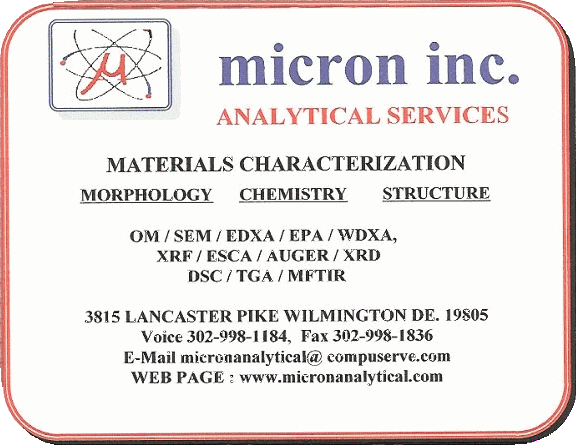
Saint Louis Award Symposium Program 2015
The speakers have been lined up, the venue set, talks titled. The Saint Louis Award Symposium—Friday, October 16th—will feature a who’s-who of rising local and national material scientists. Come for the science; come back for the banquet.
Materials Science comes to St. Louis
honoring Sophia Hayes
Department of Chemistry, Washington University
2015 Saint Louis Award winner
Louderman Hall 458, Danforth Campus, Washington University
1:15pm — Dr. Pegah Jalili, Sigma-Aldrich Corporation (Chair, Saint Louis Section–ACS)
Welcome and general introductions
1:20pm — Dr. William E. Buhro, Chair, Department of Chemistry, Washington University (Symposium Chair)
Introduction and Salute to Dr. Hayes
1:25pm — Dr. Sophia Hayes, Department of Chemistry, Washington University (Saint Louis awardee)
A few words about the slate of speakers
1:30pm — Dr. Douglas A. Keszler, Department of Chemistry, Oregon State University
Clusters, Films, and Nanopatterns: Contributing to a Sustainable Planet
2:30pm — Dr. Eric H. Majzoub, Department of Physics, University of Missouri–Saint Louis
Functionalized Mesoporous Carbon Supports for Hydrogen Storage Materials: A First-principles Study of Surface Interactions with Complex Hydrides
3:10pm — Refreshment break
3:30pm — Dr. Alexander B. Barnes, Department of Chemistry, Washington University
Frequency Swept Microwaves for Dynamic Nuclear Polarization
4:10pm — Dr. Paul A. Jelliss, Department of Chemistry, Saint Louis University
Energetic Metallic Nanoparticles
4:50pm — Dr. Klaus Woelk, Department of Chemistry, Missouri University of Science and Technology
From Inversion Recovery and CPMG to High-resolution NMR Relaxometry
5:30pm — Dr. William E. Buhro
Concluding remarks
6:30pm — Saint Louis Award Banquet, Glen Echo Country Club, 3401 Lucas and Hunt Rd, Normandy, MO
Reservations required
Saint Louis Award Banquet 2015
WHEN: Friday, October 16th, directly after the Award Symposium.
6:30 pm cocktails (open bar), 7:00 pm banquet, 8:00 pm program
WHERE: Glen Echo Country Club, 3401 Lucas & Hunt Road, Saint Louis, MO 63121.
Please send reservations, including check, by October 13th to:
Lawrence Barton, Professor Emeritus
Department of Chemistry and Biochemistry
315 Benton Hall (MC 27)
University of Missouri–St Louis
Saint Louis, MO 63121
email lbarton@umsl.edu, or
phone 314.516.5334; cell 314-698-9748; fax 314.516.5342
Make checks payable to Saint Louis Section–ACS, and provide the following information:
Name(s) ________________________________________________________________
Number attending _____ × $60.00 each
amount remitted $____________
Special dietary limitations, if any ___________________________________
Notice: Your (or your minor child’s) attendance at and participation in events and activities of the Saint Louis Section–American Chemical Society (STLACS) constitutes your permission for non-commercial use, without compensation and in perpetuity, of photographs, video, and audio recordings of you and/or your minor child in publications of the STLACS, including but not limited to website and newsletter reports of such event or activity.
Meet the 2015 Midwest awardee, Robert Blankenship
Pegah Jalili, 2015 Chair of the St Louis Section–ACS and Chair of the Midwest Award Jury, has announced the winner of the 2015 Midwest Award: Professor Robert Blankenship of Washington University.
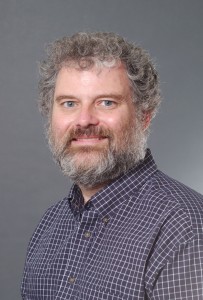
Robert Blankenship, 2015 Midwest Award winner
In 2006, Blankenship moved to Washington University in St Louis, where he is the Lucille P Markey Distinguished Professor of Arts and Sciences in the Departments of Biology and Chemistry. In 2009, he became the founding director of the Photosynthetic Antenna Research Center (PARC), a DOE Energy Frontier Research Center. He was co-organizer for the 16th International Congress on Photosynthetic Research, which was held in Saint Louis in August, 2013.
Dr Blankenship has spent his entire scientific career of more than 40 years researching the highly interdisciplinary subject of photosynthesis. This research has used a wide range of techniques including ultrafast optical spectroscopy, magnetic resonance and mass spectrometry as well as genomics and molecular evolutionary analysis. His research investigates energy-transfer and electron-transfer processes in photosynthetic antenna and reaction center complexes. One of the hallmarks of his research program is that it emphasizes studying the mechanism of energy storage in the complete range of known organisms that do photosynthesis, with the goal of discovering the essential, irreducible aspects of how light energy is stored.
American Chemical Society National Chemistry Week (NCW) 2015
submitted by Greg Wall
It is that time again to start thinking about how you can share your passion for chemistry by participating as a volunteer in the premier American Chemical Society public outreach program. The NCW 2015 theme is “Chemistry Colors Our World”, focusing on the chemistry of food colors and fireworks, rainbows, natural dyes and pigments, and more. We will again be partnering with the Saint Louis Science Center to host the event. You may participate as a volunteer, presenter, or sponsor. To join us in the festivities, contact Greg Wall, gwall37@msn.com, to sign up or for further information.
Seeking Retirees Eager to Make An Educational Impact
submitted by Sheryl Loux
Simple equipment and simple setup serves up “States of Matter” to a large group of kids
One of the most popular outreach programs sponsored by the St Louis ACS section is Chemistry is pHun! Sheryl is seeking a retiree to take over this rewarding program or if you would like to offer some of these programs in a school district close to where you live, please contact Sheryl J Loux by email, sjloux@gmail.com or 636.237.5149 to discuss the programs. Training is available.
The twenty-four Chemistry is pHun programs in calendar year 2014 — all given by Sheryl — have had an educational impact on 822 students in 10 or more schools. Program activity for the 2014-2015 school year has started strongly this fall. The program modules offered by Sheryl are “States of Matter, “Chemistry is pHun”, “What is Matter?”, Using the Scientific Method for a Science Fair Project, and “Polymers are Marvelous Molecules” (includes DNA extraction from strawberries). Sheryl thanks Don Sartor and Amy Kerkemeyer for helping with some programs.
Kids having fun and learning; is there a better way to spend a day—for them or for you?
The “States of Matter” program was designed for elementary students and is popular for the 2nd and 3nd grades. The states of matter are explored with solid, liquid, and gas states of mainly water, demonstrating the addition or release of energy in the form of heat when changing physical states. Examples of plasma are mentioned and “Gluep” is made to show a substance that has properties of both liquids and solids.
The “Chemistry is pHun” program is designed for grades 4-12 and covers pH, a review of states of matter, dissolution, chemical reactions, and various polymers.
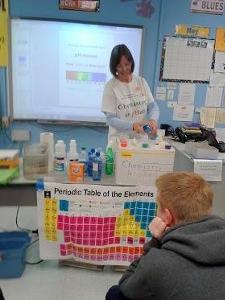
”Chemistry is pHun” for eighth graders demonstrated by Amy Kerkemeyer (shown) and Sheryl Loux (program Coordinator).
Another program for grades K-3 is “What is Matter?” where the periodic table of elements is introduced and water molecules are made with marshmallows for atoms and toothpicks representing electron bonds.
Using the Scientific Method for a Science Fair Project is designed for grades 5-8, and “Polymers are Marvelous Molecules” (includes DNA extraction from strawberries) is for grades7-12.
Of the 822 students participating this calendar year, 610 students have enjoyed the “States of Matter” program, 160 students have enjoyed the “Chemistry is pHun” program, and 52 students extracted DNA in the “Polymers are Marvelous Molecules”.
The High School Chemistry Teacher-of-the-Year Award for 2016
The St Louis Section–ACS is seeking nominations for the 2016 High School Chemistry Teaching Award. This award is to recognize, encourage, and stimulate outstanding teachers of high school chemistry within the St Louis Section. The award winner will receive a $500 check and a plaque, presented at an awards dinner and program next April.
Please consider nominating a teacher in the Greater St Louis Area who exemplifies excellence in the teaching of high school chemistry. The nomination packet must include the following items:
From the Nominee:
- the Nominee Information Form
- your current teaching assignment including course titles and grade levels. What is your involvement in extracurricular activities?
- on a separate sheet, a statement of not more than 500 words in which you present your teaching philosophy or otherwise describe your commitment to the profession.
- a curriculum vitae or résumé that includes a list of honors, professional activities, and additional evidence of service to the profession; limited to no more than two pages of activities within the last five years.
From the Nominator:
- the Nominator Information Form
- nominator recommendation of not more than 1,000 words. This statement should clearly demonstrate as many of the following attributes as possible:
- · the quality of the nominee’s teaching: unusually effective methods of presentation should be emphasized
- · the nominee’s ability to challenge and inspire students
- · extracurricular work in chemistry or a chemical science by the nominee, including science fairs, science clubs, and activities that stimulate the interest of young people in chemistry and related sciences
- · a willingness to keep up-to-date in the field, as evidenced by the pursuit of a higher degree in chemistry or a chemical science, enrollment in refresher courses and summer institutes, regular attendance at scientific meetings, membership in professional organizations, and other means of self-improvement
- · evidence of leadership or active involvement within the profession
- at least one, but not more than three, letters of support; one must be from the teacher’s current principal or supervisor. Additional letters of support may be sent by colleagues, members of the American Chemical Society who are familiar with the nominee’s achievements, or former students and parents of former students.
Please submit the nomination packet by December 11, 2015. To submit a nomination, email the nomination materials to Pegah Jalili at Pegah.Jalili@sial.com or phone 314.546.9278.

Election Ballot Special Chemical Bond Edition
The STL section election ballot for the next board will come in a special Chemical Bond edition later this month. Please take this opportunity to cast your vote for the candidates of your choice.
LDF Module: Leading Multiple Generations
The next Leadership Development Forum module will be the topic of Leading Multiple Generations. The seminar will be on 10/29 at CIC@CET. The associated workshop will be on 11/19 at The Edge of Webster next to Mallinckrodt. Watch the STLACS home page for additional details on these LDF modules.

Board of Directors
St Louis Section–ACS Board of Directors meets the second Thursday of each month, usually at the Glen Echo Country Club (map and driving directions). Meetings are open to all members, and all are encouraged to attend. Elected officers and chairs of major committees vote on questions put to the Board; others in attendance have voice but no vote.
If you want to attend for dinner, please contact the section Chair at least a week in advance. Usual cost of the dinner is $21 ($12 for post-docs and unemployed members). Bar service and dessert are optional extras. Members wishing to become active in section activities are welcomed for their first dinner as guests of the section.
Date: Oct 8
Social hour, cash bar: 5:30 pm
Business meeting: 6:30 pm (suspended for dinner when served)
Future meetings: Nov 12, Dec 10
Saint Louis University
Seminars are generally on Fridays at 12 noon in Carlo Auditorium, Tegeler Hall, unless noted otherwise. Refreshments follow. For the most up-to-date information, refer to the department’s seminar page or contact Jim Edwards, jedward5@slu.edu.
University of Missouri–St Louis
Mondays at 4 pm in 451 Benton Hall, unless otherwise specified. Refreshments 15 minutes prior to seminar time. For timely information on visiting seminar speakers, contact the Chemistry Department, 314.516.5311, or visit the seminar schedule. The department has additional seminar series which are also accessible from this page.
Washington University
Seminars are in McMillen 311 at 4 pm unless otherwise noted. For information, consult the departmental events page. Related seminars, including endowed seminar series and the WU med school biochemistry series, are linked here as well.
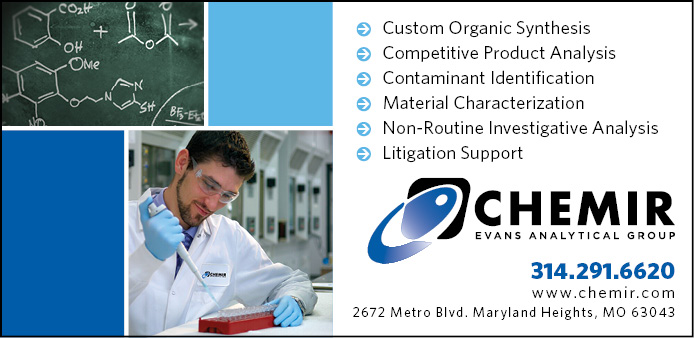

The Chemical Bond is published at www.stlacs.org January through May and September through December by the St Louis Section–American Chemical Society. If you would like to receive email notification when each issue is posted, you can subscribe to our email list and join the “Chemical Bond reminders” group.
|
Correspondence, letters to the editor, etc., should be emailed to editor@stlacs.org Copyright © 2015 American Chemical Society and the St Louis Section–ACS |
||
| Editor | Margaret Allen | editor@stlacs.org |
| Associate Editor | Eric Ressner | 314.962.6415 editor@stlacs.org |
| Assistant Editor & Advertising Manager |
Keith Stine | 314.516.5346 advmgr@stlacs.org |
| Business Manager | Donna Friedman | 314.513.4388 bizmgr@stlacs.org |

